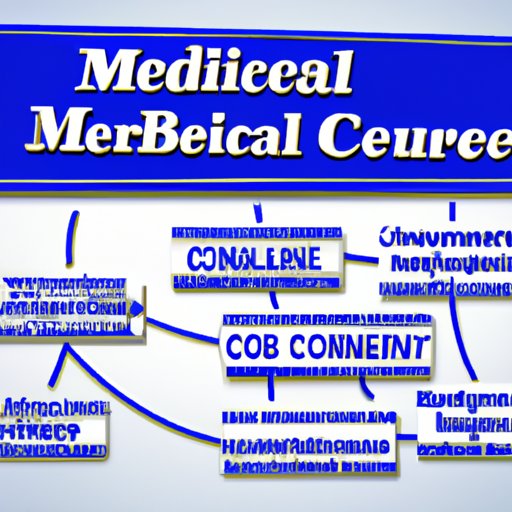Introduction
Medicare is a federal health insurance program that provides coverage for individuals who are 65 years old or older, certain people under 65 with disabilities, people with End-Stage Renal Disease (ESRD) and those with Lou Gehrig’s disease (ALS). For those who meet the eligibility requirements, Medicare can provide access to health care services, help cover the cost of medical care, and offer additional coverage options. This article will explore who is covered by Medicare and provide an overview of the types of coverage available, costs associated with the program, and the benefits of having Medicare coverage.
What Does Medicare Cover?
Medicare is divided into four parts: Part A, Part B, Part C, and Part D. Each part covers different types of services and has its own eligibility requirements. Here is a breakdown of the different parts of Medicare and what they cover.
Part A
Part A covers inpatient hospital services, skilled nursing facility care, hospice care, and some home health care services. It also helps cover the cost of a semi-private room, meals, general nursing services, and other related services while in the hospital. Those eligible for Part A must be at least 65 years old, have worked at least 10 years in a job where Medicare taxes were paid, or be eligible for Social Security or disability benefits.
Part B
Part B covers physician services, outpatient hospital services, certain home health services, durable medical equipment, and preventive services. It also helps cover the cost of laboratory tests, X-rays, mental health services, and ambulance services. Those eligible for Part B must be at least 65 years old, have worked at least 10 years in a job where Medicare taxes were paid, or be eligible for Social Security or disability benefits.
Part C
Part C is also known as Medicare Advantage and it allows individuals to receive their Medicare benefits through private health plans such as Health Maintenance Organizations (HMOs) or Preferred Provider Organizations (PPOs). These plans typically include all of the benefits of Parts A and B, plus additional benefits such as vision, hearing, dental, and prescription drug coverage. Individuals must be eligible for Parts A and B in order to enroll in a Part C plan.
Part D
Part D covers prescription drugs and is offered through private insurance companies. Part D plans vary in terms of cost and the drugs they cover, so it is important to compare plans before enrolling. Those eligible for Part D must be at least 65 years old or have a qualifying disability.
Cost of Medicare and How to Pay for It
The cost of Medicare depends on the type of coverage you have and your income level. Part A is usually free for those who have worked at least 10 years in a job where Medicare taxes were paid, but there may be a premium for those who are not eligible for premium-free Part A. Part B premiums depend on income level and range from $144.60 to $491.60 per month. Part C and Part D plans also have premiums, deductibles, and copayments that vary depending on the plan. There are several ways to pay for Medicare, including payroll deductions, direct billing, and premiums deducted from Social Security benefits.

Benefits of Having Medicare Coverage
Having Medicare coverage can provide many benefits, including lower costs for medical care, improved access to care, and additional coverage options. Medicare can help cover the cost of doctor visits, hospital stays, and other medical services, which can help reduce out-of-pocket costs. Medicare also provides access to a wide range of doctors and providers, which can make it easier to get the care you need. In addition, Medicare Part C and Part D plans can provide additional coverage for vision, hearing, dental, and prescription drugs.
Conclusion
Medicare is a federal health insurance program that provides coverage for individuals who are 65 years old or older, certain people under 65 with disabilities, people with ESRD, and those with Lou Gehrig’s disease (ALS). Medicare is divided into four parts: Part A, Part B, Part C, and Part D. The cost of Medicare depends on the type of coverage you have and your income level. Having Medicare coverage can provide many benefits, including lower costs for medical care, improved access to care, and additional coverage options. This article explored who is covered by Medicare, the types of coverage available, costs associated with the program, and the benefits of having Medicare coverage.
For more information on Medicare eligibility and coverage, visit https://www.medicare.gov/.
(Note: Is this article not meeting your expectations? Do you have knowledge or insights to share? Unlock new opportunities and expand your reach by joining our authors team. Click Registration to join us and share your expertise with our readers.)
